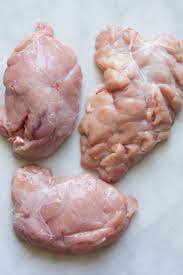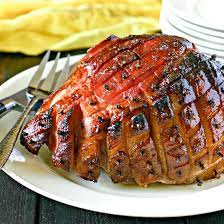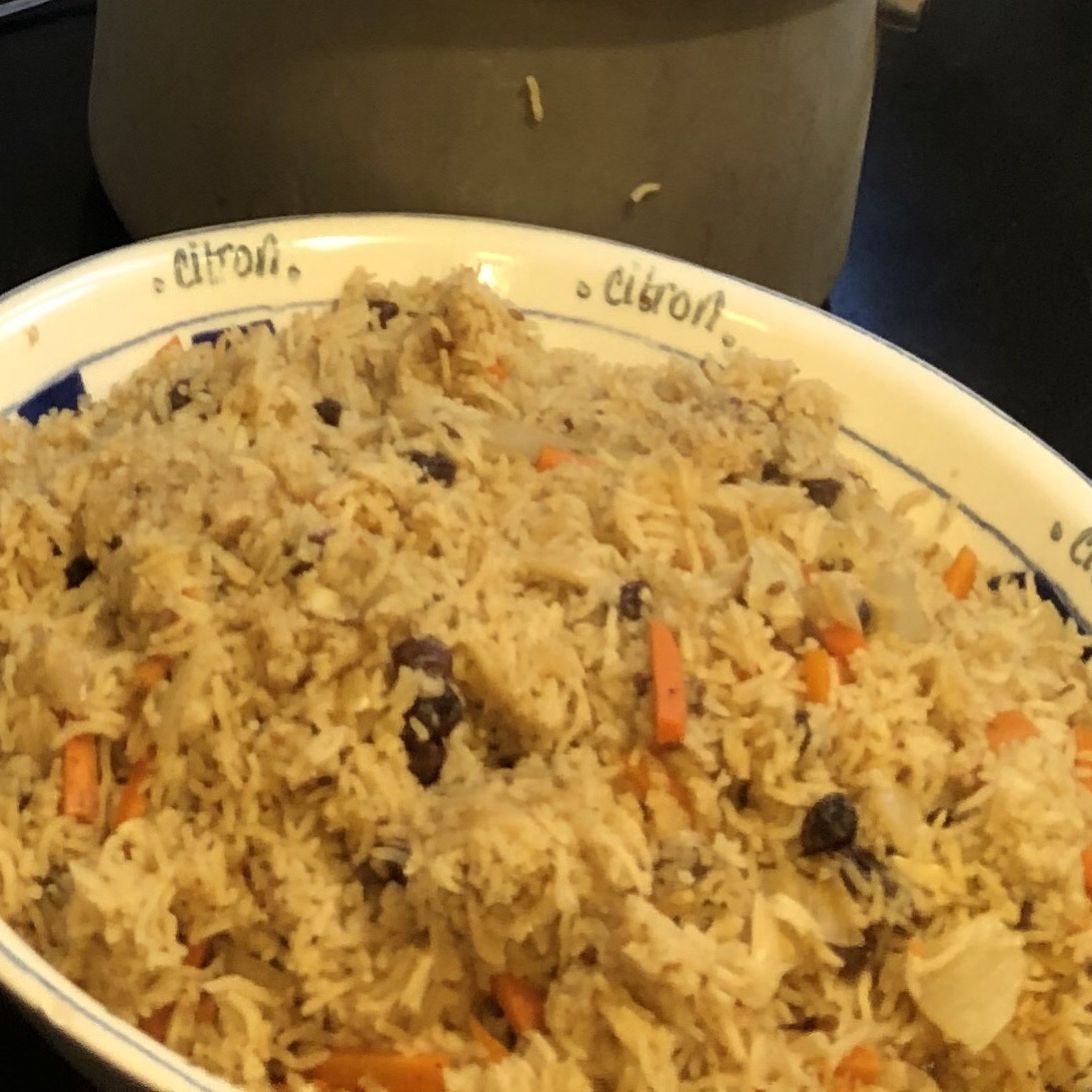Discover the Delightful and Delectable World of What are Sweetbreads
Sweetbreads. The mere mention of this culinary delight may elicit confused stares or wrinkled noses from the uninitiated. But for those in the know, sweetbreads are a delicacy that tantalizes the taste buds and elevates any dining experience to new heights.
But what exactly are sweetbreads? Contrary to what the name might suggest, sweetbreads are not bread at all. In fact, they are a type of offal, specifically the thymus gland or pancreas of a young calf or lamb. The name itself is believed to have come from the Middle English word “swete brede,” meaning “sweet meat.”
While it may seem unappetizing to some, sweetbreads are revered by chefs and gourmands around the world for their delicate texture and rich, savory flavor. Once prepared, sweetbreads take on a silky, creamy consistency that melts in your mouth. They have a mild yet distinct taste that can be described as slightly nutty or buttery, making them an ideal canvas for a wide range of flavors and seasonings.
Despite their exquisite taste and texture, sweetbreads are often overlooked or dismissed due to their unconventional nature. However, those willing to venture beyond their culinary comfort zones are rewarded with a gastronomic experience like no other. Whether served alone as the centerpiece of a gourmet dish or incorporated into other recipes, sweetbreads are sure to awaken the senses and leave a lasting impression.
The History of Sweetbreads
The history of sweetbreads can be traced back to ancient times, when they were considered a delicacy among the elite. It is believed that sweetbreads were first enjoyed in ancient Rome, where they were served as part of lavish feasts and banquets.
Originally, sweetbreads referred to the thymus glands from young calves, but over time, the term began to be used for other glands as well. Today, sweetbreads can refer to the thymus gland, as well as the pancreas and other glands from animals such as lambs, pigs, and chickens.
In medieval European cuisine, sweetbreads continued to be highly prized and featured prominently in elaborate dishes. They were often prepared and presented in creative ways, showcasing the culinary skills of the chefs. Sweetbreads were a symbol of wealth and luxury, and only the nobility and the rich could afford to enjoy them regularly.
Over the centuries, sweetbreads have remained a popular delicacy, with different cultures and cuisines putting their own spin on how they are prepared and served. In French cuisine, sweetbreads are often braised or fried and served with a rich sauce, while in Spanish cuisine, they are often cooked with mushrooms and garlic.
Despite their name, sweetbreads are not actually sweet in taste. The name “sweetbreads” is believed to come from the old English word “sweetbread,” which referred to the “sweets” or “delicacies” of an animal. It is a testament to the high regard in which sweetbreads have been held throughout history.
Today, sweetbreads are still considered a delicacy and can be found on the menus of high-end restaurants and gourmet establishments. Their unique texture and flavor make them a sought-after ingredient for adventurous food enthusiasts who want to experience something truly special.
- Sweetbreads can be an acquired taste, but once you try them, you may find yourself hooked.
- Whether you enjoy them in traditional French dishes or explore new culinary twists, sweetbreads offer a culinary experience that is both delicate and delicious.
- So next time you come across sweetbreads on a menu, don’t be afraid to give them a try and discover the history and taste of this ancient delicacy.
The Different Types of Sweetbreads
When it comes to sweetbreads, there are actually several different types that you can enjoy. Each type has its own unique texture and flavor profile, making them a versatile ingredient in the culinary world. Here are some of the most popular types of sweetbreads:
Thymus Sweetbreads
Thymus sweetbreads, also known as throat sweetbreads, are one of the most commonly consumed types. They come from the thymus gland of the animal, which is located near the throat. Thymus sweetbreads have a delicate texture and a slightly sweet flavor. They are often used in classic French recipes, such as sweetbread terrine or sautéed thymus sweetbread.
Pancreas Sweetbreads
Pancreas sweetbreads, also known as stomach sweetbreads, are another popular type. They are derived from the pancreas gland of the animal. Pancreas sweetbreads have a richer and creamier texture compared to thymus sweetbreads. They have a slightly more robust flavor and are often used in hearty dishes like stews or braises.
Note: Some culinary experts use the term “thymus sweetbreads” and “pancreas sweetbreads” interchangeably, depending on the region or culinary tradition.
Heart Sweetbreads
Heart sweetbreads, as the name suggests, are sourced from the heart of the animal. They have a firmer and denser texture compared to the other types. Heart sweetbreads have a slightly stronger flavor, reminiscent of the muscle it comes from. They are commonly used in dishes such as grilled sweetbreads or as a filling for savory pastries.
Testicles Sweetbreads
Testicles sweetbreads, also known as criadillas, are a unique type of sweetbreads that come from the reproductive organs of the animal. They have a distinct and robust flavor profile, often described as rich and gamey. Testicles sweetbreads are used in various cultural cuisines, such as Spanish or Brazilian, where they are typically grilled or fried.
Overall, sweetbreads offer a wide range of options for culinary exploration. Next time you come across sweetbreads on a menu, you can now appreciate the different types and their unique characteristics.
| Type of Sweetbreads | Texture | Flavor Profile | Common Uses |
|---|---|---|---|
| Thymus Sweetbreads | Delicate | Slightly sweet | Terrine, sautéed |
| Pancreas Sweetbreads | Rich and creamy | Robust | Stews, braises |
| Heart Sweetbreads | Firm and dense | Strong | Grilled, pastries |
| Testicles Sweetbreads | N/A | Distinct and gamey | Grilled, fried |
How to Cook Sweetbreads
When it comes to cooking sweetbreads, it’s important to take the time to properly prepare and cook this delicate delicacy. Here are some steps to help you achieve the perfect sweetbreads:
Step 1: Soaking
Start by soaking the sweetbreads in cold water for about 1 hour. This will help remove any remaining blood and impurities, resulting in a cleaner and milder flavor.
Step 2: Blanching
After soaking, bring a pot of water to a boil and blanch the sweetbreads for about 3 minutes. This will help further remove any impurities and will also firm up the texture of the sweetbreads.
Step 3: Cooling
Once blanched, immediately transfer the sweetbreads to an ice bath to stop the cooking process and cool them down. This will help maintain their delicate texture.
Step 4: Cleaning
Gently peel off the outer membrane and remove any excess fat or connective tissue from the sweetbreads. This step is important to ensure a smooth and uniform texture.
Step 5: Cooking
There are many ways to cook sweetbreads, but one popular method is to sauté them in a hot skillet with some butter or oil. Cook the sweetbreads for about 2-3 minutes on each side, or until they are golden brown and crispy on the outside. Alternatively, you can also grill or roast them in the oven.
Step 6: Seasoning
Season the cooked sweetbreads with salt, pepper, and any other desired spices or herbs. The mild and delicate flavor of sweetbreads pairs well with a variety of seasonings.
Step 7: Serving
Sweetbreads are often served as an appetizer or main dish. They can be enjoyed on their own or incorporated into a variety of recipes, such as stews, pastas, or even sandwiches.
Now that you know how to cook sweetbreads, don’t be intimidated by this unique and delicious delicacy. With a little preparation and care, you can enjoy the delicate flavors and textures that sweetbreads have to offer.
The Nutritional Value of Sweetbreads
Sweetbreads, a delicacy made from the thymus or pancreas of young animals, are not only a gourmet treat but also a nutritious addition to your diet. They are rich in essential nutrients that can contribute to your overall health and well-being.
Here are some of the key nutritional values of sweetbreads:
- Protein: Sweetbreads are an excellent source of protein, which is essential for building and repairing tissues. They contain all the essential amino acids, making them a complete protein source.
- Vitamins: Sweetbreads are a good source of vitamins, particularly B vitamins such as thiamin, riboflavin, and niacin. These vitamins play a crucial role in energy metabolism and maintaining proper brain function.
- Minerals: Sweetbreads are rich in minerals like iron, zinc, and selenium. Iron is essential for the production of hemoglobin and oxygen transportation in the body. Zinc supports immune function and wound healing, while selenium acts as an antioxidant.
- Low in Fat: Despite their creamy texture and rich flavor, sweetbreads are relatively low in fat. This makes them a healthy option for those who are conscious of their fat intake.
- Cholesterol: While sweetbreads do contain cholesterol, it’s worth noting that dietary cholesterol does not necessarily translate to increased cholesterol levels in the blood. Moderation is key when including sweetbreads in your diet.
When incorporating sweetbreads into your meals, it’s important to pay attention to portion sizes and cooking methods. To maximize their nutritional value, opt for cooking techniques that minimize the use of additional fats, such as grilling or baking.
In conclusion, sweetbreads are not only a delightful culinary experience but also a nutritiously beneficial choice. By enjoying sweetbreads in moderation and as part of a well-balanced diet, you can savor their flavor while reaping the nutritional benefits they offer.
Health Benefits of Sweetbreads
Sweetbreads, despite their name, are not sweet at all. They are a culinary delicacy and provide various health benefits. Here are a few of the reasons why you may want to consider adding sweetbreads to your diet:
1. High in Protein
Sweetbreads are a great source of protein, which is essential for the growth and repair of tissues in the body. The protein found in sweetbreads is also considered to be of high quality, meaning it contains all the essential amino acids that your body needs.
2. Rich in Vitamins and Minerals
Sweetbreads contain a variety of vitamins and minerals that are important for maintaining good health. These include iron, zinc, selenium, and vitamins A, B, and D. Iron helps with the production of red blood cells, while selenium is known for its antioxidant properties.
In addition to these nutrients, sweetbreads also provide a good amount of vitamin B12, which is essential for nerve function and the formation of DNA.
If you are looking for a nutrient-dense food to add to your diet, sweetbreads are a great choice.
While sweetbreads can be a nutritious addition to your diet, it’s important to remember that they are high in cholesterol and should be consumed in moderation, especially if you have certain health conditions such as high blood pressure or heart disease.
Overall, sweetbreads can be a delicious and nutritious option to include in your diet. Just make sure to balance your consumption with other nutritious foods and enjoy them in moderation.
Concerns and Precautions with Sweetbreads
While sweetbreads can be a delicious and delicate culinary delight, there are some concerns and precautions that should be taken into consideration when preparing and consuming them. It is important to be aware of these factors to ensure a safe and enjoyable dining experience.
| 1. Quality and Source: | Ensure that the sweetbreads are fresh and from a reliable source. Look for sweetbreads that have a light, pinkish color and a firm texture. |
| 2. Preparation: | Properly clean and soak the sweetbreads before cooking to remove any impurities or excess blood. Trim off any membranes or connective tissues to avoid a tough texture. |
| 3. Allergies: | Be aware that some individuals may have allergies to sweetbreads. If you or your guests have any known allergies or sensitivities, it is best to avoid consuming sweetbreads or consult a healthcare professional. |
| 4. Cooking Temperature: | Cook sweetbreads thoroughly to an internal temperature of at least 160°F (71°C) to ensure that any potential bacteria or parasites are killed. Use a meat thermometer to check the temperature. |
| 5. Serving: | Serve sweetbreads immediately after cooking to maintain their delicate texture and flavor. Avoid leaving them at room temperature for too long as they can spoil quickly. |
| 6. Limited Consumption: | Due to their high cholesterol and fat content, it is recommended to enjoy sweetbreads in moderation as part of a balanced diet. Overconsumption may lead to health issues, especially for individuals with certain medical conditions. |
By following these concerns and precautions, you can confidently enjoy the delightful and delicate flavors of sweetbreads while ensuring safety and a pleasant dining experience for yourself and your guests.
“FAQ:” What are sweetbreads
What is organ meat, and why might some people find it delicious?
Organ meat refers to the internal organs of animals, often consumed as food. Some people find it delicious due to its unique flavor and nutritional richness.
What are lamb sweetbreads, and where are they located in the animal’s body?
Lamb sweetbreads are organ meats located near the stomach, specifically consisting of the thymus and pancreas.
How are sweetbreads prepared, and what does the preparation involving breading and frying entail?
The preparation of sweetbreads involves breading and frying, where the sweetbreads are coated with breadcrumbs and fried until crisp, resulting in a delicious and crispy texture.
Why are sweetbreads also called “variety meat,” and what makes them distinct from regular muscle flesh?
Sweetbreads are also called “variety meat” because they come from the thymus and pancreas, distinguishing them from regular muscle flesh. Their unique composition contributes to their distinct taste and texture.
What historical references indicate the consumption of sweetbreads, and how have they been used in various cuisines?
Sweetbreads have been consumed since the 16th century, as illustrated by references in Larousse. They have been used in various cuisines, including Turkish and Greek, and can be broiled, seared, or used in dishes like pâtés and stuffing.
What is the appeal of veal, and why do some people find it delicious?
Veal is often considered tender and delicate in flavor, contributing to its appeal, and some people find it delicious due to its unique taste and texture.
How do sweetbreads differ from regular cuts of beef, and what makes them distinct in terms of taste and texture?
Sweetbreads come from the thymus and pancreas, distinguishing them from regular cuts of beef. They have a unique taste and texture, often described as tender and delicious.
What is the significance of breading sweetbreads, and how does the process of breading and frying enhance their culinary appeal?
Breading sweetbreads involves coating them with breadcrumbs and frying until crisp. This process enhances their culinary appeal by providing a crispy texture that complements the tender nature of sweetbreads.
How do neck sweetbreads differ from other types, and what makes them irregular or round in shape?
Neck sweetbreads may have irregular or round shapes, adding to their unique characteristics. The specific differences may be unclear without further context.
What is the role of buttermilk and ice water in the preparation of sweetbreads, and why is chilling them important?
Buttermilk and ice water are used in the preparation of sweetbreads to soak and chill them, contributing to the tenderness and flavor. Chilling helps firm the sweetbreads for easier handling during cooking.
Why is the removal of the membrane important in the preparation of sweetbreads, and how does it impact the taste and texture?
Removing the membrane from sweetbreads is crucial as it can be tough and negatively affect the taste and texture. This step ensures a more enjoyable eating experience.
How do sweetbreads taste, and what is the origin of the term “sweetbreads”?
Sweetbreads are described as having a delicate, sweet flavor. The term “sweetbreads” is believed to originate from the Old English word “sweetbread,” meaning “delicious meat.”
What is the culinary significance of duck sweetbreads, and how do they differ from those of cattle or veal?
Duck sweetbreads have a unique taste and texture compared to those from cattle or veal. The specific differences may vary, and further details would be needed to elaborate on the culinary significance.
How do kidney sweetbreads differ from other types of sweetbreads, and what role do they play in Greek cuisine?
Kidney sweetbreads may differ in taste and texture from other types. In Greek cuisine, they are used in various recipes, contributing to the richness and diversity of Greek dishes.
Why are some sweetbreads neither sweet nor bread-like, and what contributes to their tasty quality?
The term “sweetbreads” is unrelated to sweetness or bread. Despite the name, the appeal of sweetbreads lies in their tenderness, unique flavor, and versatility in creating tasty dishes.
Why are sweetbreads often described as “delicious” in the culinary world, and what contributes to their unique flavor?
Sweetbreads are frequently labeled as delicious due to their unique taste, tenderness, and versatility in various culinary applications.
What is the significance of breading sweetbreads, and how does the process of breading and frying enhance their overall culinary appeal?
Breading sweetbreads involves coating them with breadcrumbs and frying until crisp. This process enhances their culinary appeal by providing a crispy texture that complements their natural tenderness.
Why is the removal of the membrane from sweetbreads considered an important step in their preparation, and how does it impact the overall eating experience?
Removing the membrane from sweetbreads is crucial as it can be tough and negatively impact the taste and texture. This step ensures a more enjoyable eating experience and allows for better absorption of flavors.
How are sweetbreads used in Greek cuisine, and what role do they play in the culinary traditions of Greece?
Sweetbreads contribute to the rich and diverse flavors of Greek cuisine, showcasing their versatility in various Greek dishes.
What does sweetbreads taste like, and how does their flavor profile contribute to their popularity in Greek culinary traditions?
Sweetbreads are known for their delicate and unique taste. In Greece, their flavor profile enhances the overall appeal of Greek dishes, making them a popular ingredient in the country’s culinary traditions.



